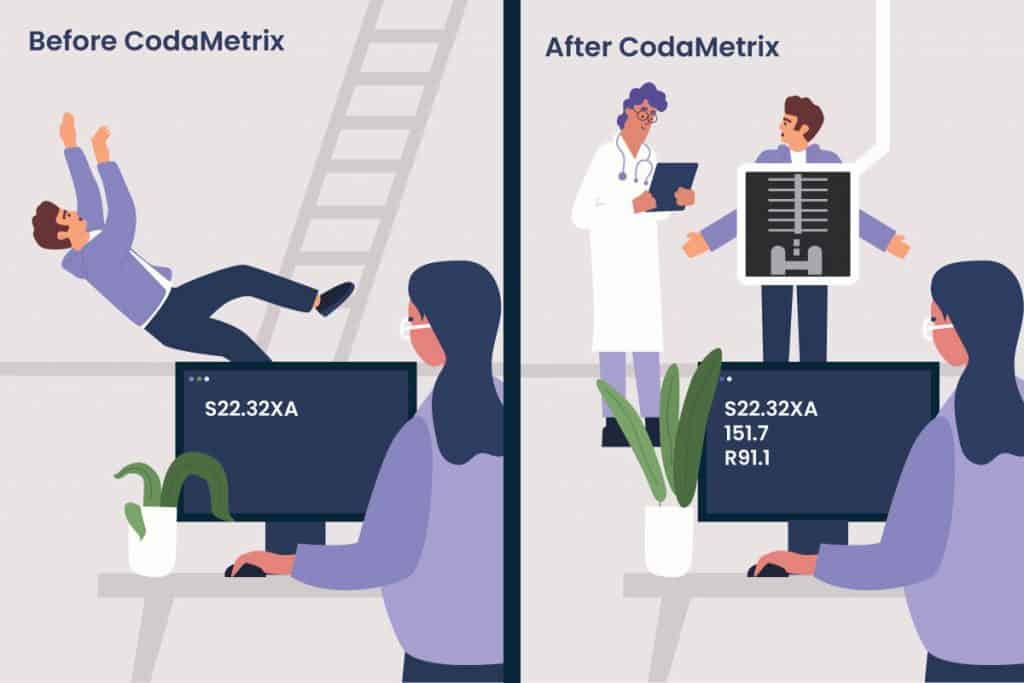Medical coding is the process of translating patient medical records into standardized codes so that data can be collected and analyzed for purposes such as billing, research, or quality improvement. It is a sophisticated language essential to the healthcare system: without it, patient records and billing wouldn't be possible. By assigning codes according to standardized systems like ICD and CPT, medical coders are able to document treatments, and track outcomes for research purposes or quality improvement initiatives - all while ensuring the accuracy of payments for providers and insurance companies alike.
Medical coding is a critical step in the medical billing process. It involves assigning codes to patient treatments and diagnoses using standardized coding systems such as the International Classification of Diseases (ICD) and Current Procedural Terminology (CPT). These codes document healthcare services, track outcomes, and determine payments. Medical coding accuracy is critical for healthcare providers and insurance companies to ensure accurate service reimbursement.
The origins of the ICD system can be traced as far back as 1763. The French physician and botanist Dr. François Bossier de Sauvages de Lacroix created a categorization system for 10 classes of diseases which expanded to 2400 individual diseases. Eventually, countries around the globe began adopting this system of diagnostics. In 1948, the World Health Organization (WHO) took charge of the system and expanded it to include coding for causes of morbidity in addition to mortality. After that, a new revision of the ICD was released every decade, each expanding on the details needed to categorize hospitals’ needs. That brings us to the most recent revision, ICD-10, which was released in 2015. It can be broken down into two classifications: ICD-10-CM which are clinical modifications and ICD-10-PCS which are procedure coding systems. ICD-10-CM codes classify diagnoses in all healthcare settings, while ICD-10-PCS codes are for hospital inpatient services. The structure of the codes is three to seven characters and begins with a letter, longer codes are correlated with greater clinical specificity.
The CPT system was created and is still managed by the American Medical Association (AMA) with the first ever version being released in 1966. The goal of CPT codes is to standardize terminology and reporting, and with the industry rapidly changing, the AMA releases updates to the CPT code database annually. CPT codes are divided into three categories: Category I codes are those common in clinical practice, Category II codes are centered around quality performance initiatives and measures, and Category III codes track new or experimental procedures and technologies. The structure of these codes is five characters long and composed of both numbers and letters with each category having a specific range of numbers.
Medical coding is an integral part of any health organization and is essential for providing quality care. By staying up to date with the latest coding standards and regulations, medical coders can help ensure that patients and insurance providers offer payments for services received by a hospital or medical practice. Accurate coding ensures appropriate billing, and with the help of AI, it can enable medical organizations to provide value-based care by enabling the coding process to assign all clinically-relevant diagnosis codes without needing to increase the load on the human-coding team.
For example, a patient fell off an outside deck and landed on their chest. They present at the ED with chest pain. The chest x-ray reveals a left rib fracture, but the radiologist also mention cardiomegaly and a pulmonary nodule. Correct coding for billing purposes only requires that the rib fracture be coded (S22.32XA). Truly clinically-correct coding, which empowers HCC and population-level health analysis, requires the cardiomegaly (I51.7) and a pulmonary nodule (R91.1) also be coded. Coding these additional findings takes time for human coders - but not for the AI.

Sophisticated workflow capabilities also come into play here too, and it is helpful to understand the various billing scenarios faced by revenue cycle organizations. The chest x-ray results with full-clinical-specificity could be routed to bill on the referring provider charges, but NOT included when billing the radiologist professional fees since only the rib fracture is required. Powerful solutions which incorporate both sophisticated workflow and sophisticated AI capability allow for coding to be separated from the billing determination - and allow for coding to touch the encounter just once rather than multiple times for multiple use cases.
As technology advances, medical coding can now be done autonomously, which helps to streamline the process and optimize accuracy. AI is a rapidly changing and expanding field with a wide range of potential applications in the medical coding sector. AI-driven solutions are being developed to automate various tasks related to medical coding, from accurately translating clinical terms into codes to autonomously deriving accurate reimbursement amounts for a given procedure or service. This technology can significantly improve the accuracy and efficiency of medical coding and provide a clearer view of billing processes. AI can also be a powerful tool for identifying potential errors or discrepancies in a medical record. It can then be used to quickly correct any issues before they become a problem. By leveraging medical coding AI technology to streamline the medical coding process, healthcare organizations can save time and money while taking a major step forward in patient care.
Medical coding is a critical part of the healthcare system and helps to ensure that patients receive the best care possible. CodaMetrix’s CMX platform is a multi-specialty, AI-powered, coding platform that translates clinical notes into accurate sets of medical codes for patient care and revenue cycle processes, from fee-for-service to value-based care models. This helps organizations avoid costly delays and get reimbursed more quickly. The use of CMX Automate has proven results for decreasing coding-related denials by 58.7% at MGB and decreasing lag time by nearly four days at CU Medicine. The time is now to supplement organizations current medical coding teams with proven technologies that can enable healthcare organizations to more accurately and economically complete their coding and billing claims.